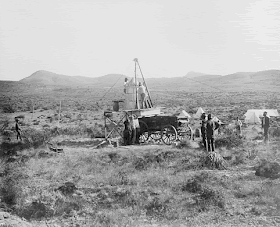 |
| The Merry Macs - Mary Lou Cook and Ted, Joe, and Judd McMichael. |
When I was little my parents seemed to watch a lot of television shows with band leaders on them - Lawrence Welk, Mitch Miller, Skitch Henderson, and once in a while Norman Tabernacle and his choir on the Ed Sullivan Show. One night I asked my dad which guy was Norman. After getting me to tell him what I meant, I thought he might die laughing. He finally explained that the singing group was the MORMON Tabernacle Choir, and that the Mormons were a variety of Christians.
Unbeknownst to me, I had just committed a mondegreen - a word or phrase resulting from a misinterpretation of an overheard word or phrase. The term was coined by the writer Sylvia Wright from an essay she published in Harper's Magazine in November of 1954. Her essay was titled "The Death of Lady Mondegreen". She got "Lady Mondegreen" from a line in a Scottish ballad, "laid him on the green". It was included in the 2000 edition of Random House Webster's College Dictionary, and in 2008 in Merriam-Webster's Collegiate Dictionary.
But the best and most well-known example of a mondegreen is the famous WWII song Mairzy Doats:
Mairzy Doats and dozy doats and liddle lamzy divey,
A kiddley divey too, wouldn't you?
Translation:
Mares eat oats and does eat oats and little lambs eat ivy,
a kid'll eat ivy too, wouldn't you?
The inspiration for the song is said to have come from songwriter Milton Drake's four-year-old daughter. She came home from school one day singing, "cozy tweet and sowzy tweet and liddle sharksy doisters." ("Cows eat wheat and sows eat wheat and little sharks eat oysters.") Early in 1942, Drake and his pals Jerry Livingston and Al Hoffman kicked around the idea of making "mares eat oats" into a song. They did but neither publishers nor leading bands were interested in a "silly" song.
A year later Livingston offered the song to Al Trace, who was bandleader of the Silly Symphonists. They broadcast the song, and put the words on a blackboard to lead the audience through the words with a pointer. It became an overnight sensation and the song was published by Miller Music. Many recordings were made of it, but the most popular one was by The Merry Macs, whose rendition was No. 1 for five weeks in 1944. It was spread all over the world by U.S. troops at foreign posts. These servicemen even allegedly used some of the lyrics as passwords.
 |
| Der Bingle got in on the act. |
The words weren't all new, however. There is an English ditty going back centuries that goes "in fir tar is, in oak none is, in mud eel is, in clay none is, goat eat ivy, mare eat oat". Dr. Dale B.J. Randall of Duke University, a Renaissance scholar, wrote a paper in 1995 titled "American 'Mairzy' Dottiness, Sir John Fastolf's Secretary, and the 'Law French" of a Caroline Cavalier". It was published in American Speech, Vol. 70, No. 4 (Winter 1995). He found the earliest written mention of similar words were found in a work by William Worcester, secretary of the knight Sir John Fastolf in the reign of Henry VI (circa 1460). In his Collectiones medicinales a passage reads "Is they pott enty, Colelent? Is gote eate yvy. Mare eate ootys. Is thy cocke lyke owrs?" The assumption is that Worcester committed to writing some known oral phrase(s). The "Law French" of Dr. Randall's title refers to a reference he found in a 1635 play by William Cavendish that used wordplay to satirize lawyers who used broken French to sound fancy: "Kiddleeatiue, Mare'leatoates".
I'm sure my parents listened to this when it first became popular. So why did they mock "In A Gadda Da Vida" by Iron Butterfly? I'm going to have to ruminate on this.
***************
Images courtesy of the Department of Special Collections,
Miller Nichols Library, University of Missouri, Kansas City.
*******************************

















































